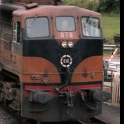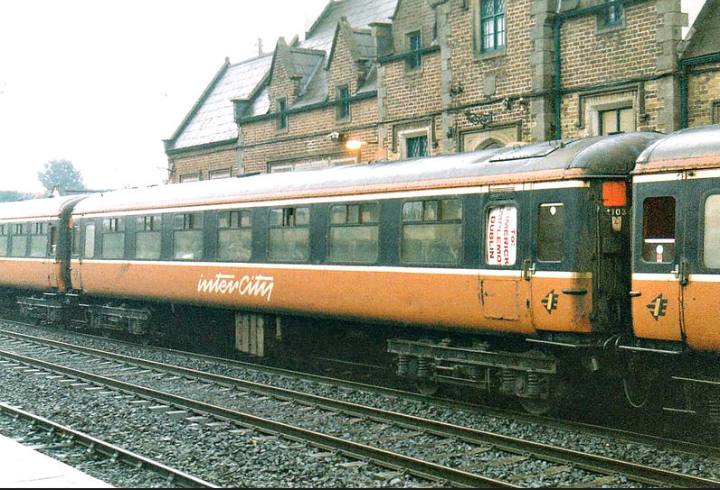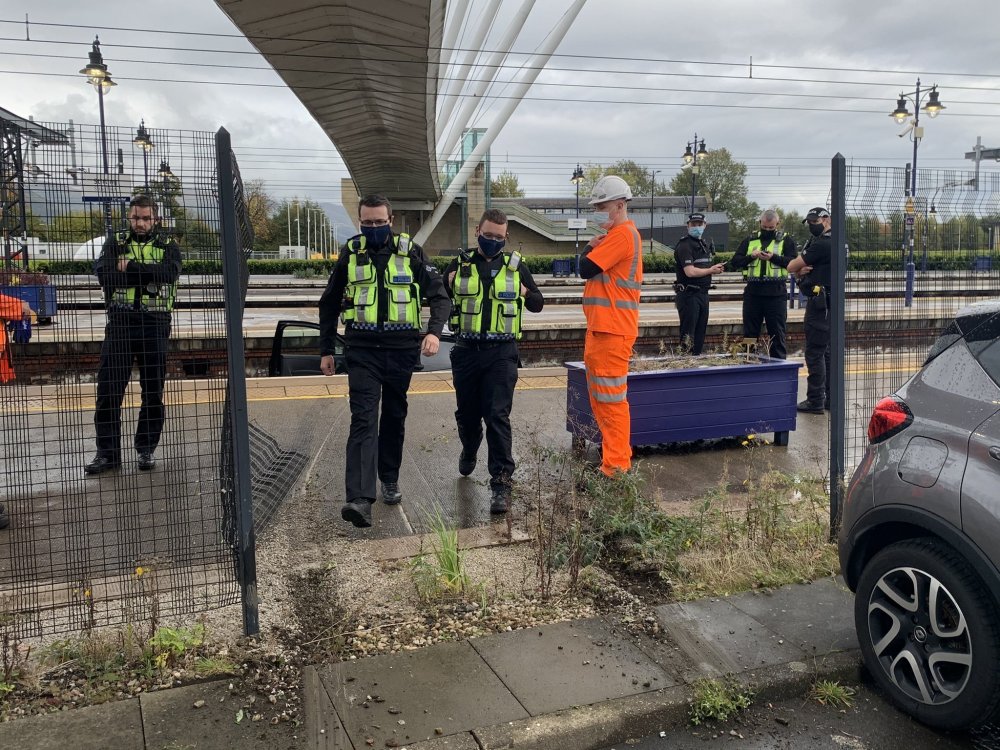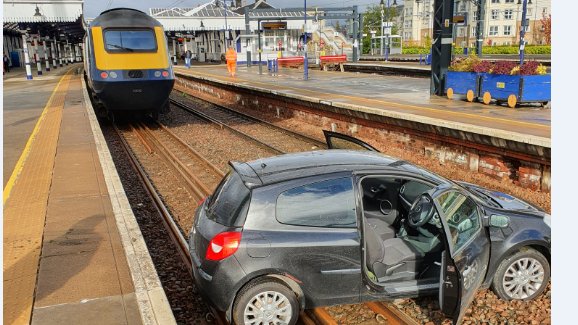-
Posts
420 -
Joined
-
Last visited
Content Type
Profiles
Forums
Events
Gallery
Blogs
Store
Community Map
Everything posted by hexagon789
-
Though it had open seating as did all of the first two batches of Mk2 stock built new for NIR. Personally I can't see anything! I'll take your word for it. I looked through the first three editions of the ITG books, the 1998 Platform 5 and journals 1987-1998 and all agree there was no compartment stock on NIR after 1991 unless an error has crept in. My thinking is the vehicle jhb travelled in could have been the Brake Executive First as it is simply listed as "loose seating as required" and compartments would probably be preferred for the likes of business meetings on board etc.
-
They also obtained BFKs (Brake First Corridor) as well these having gensets fitted to heat the other coaches as of course unlike the Hunslets, the 111s couldn't heat coaching stock. These are still marked as compartment stock in 1994. Need to look out my other stock books for later dates, but I wouldn't expect them to still have had the older Mk2s some 3 years after displaced by the De-Dietrichs? Edit: Though saying that, the gen van used with the Gatwicks was one of the ex-BFK Corridor Standard Generator Brakes. Re-edit: I've checked, NIR had no compartment stock after 1991. The Brake First/Standard Corridor Generators were all converted in 1988/89 to open seating.
-
The Heart of Wales uses NSTR (No Signalman Token Remote). Four other GB lines use this, it is a cheaper and simpler version of the Radio Electronic Token Block used on the likes of the West Highland the Far North and the Kyle Line. Loops are equipped with hydraulic points which are spring in one direction so can only be traversed at 15mph, if necessary they can be hand-pumped to the opposite side but will automatically slowly return to their 'normal' position. All loops have a fixed distant board on approach which are equipped with an AWS magnet. The stop boards have a TPWS loop to prevent SPADs exiting loops. The driver operates the block equipment from small huts at the passing loop stations and this includes de-energising the TPWS loops to proceed out of the loops past the stop boards.
-
The only two not converted with withdrawn to provide spares, so all of the former BR Western Region FKs which became Standards AND remained in service by 1995 were indeed converted to open seating. One FK entered service as First Class, but this was converted to Open Standard 920 in 1991.
-
Not initially, they entered service as Compartment Standards and were only converted to open in 1988-89. That had the benefit of increasing seating capacity by 14 seats per vehicle.
-
I think I posted about this in the thread on NIR 111 Class liveries, if not let me know and I can check the journals tomorrow
-

Question re CIE Coaching Stock ( Mk2A etc)
hexagon789 replied to Junctionmad's topic in Photos & Videos of the Prototype
That's my thinking as well, I think the silver frames are a nice touch. They looked well on the 2D stock. -

Question re CIE Coaching Stock ( Mk2A etc)
hexagon789 replied to Junctionmad's topic in Photos & Videos of the Prototype
I suddenly had an idea - YouTube. John Hewitt's series of seven 1993/4 IR videos and sure enough, there's a Mk2 set in this one at 2:17. Looks like silver frames on the windows though the light is rather poor: I'll let you see if you agree -

Question re CIE Coaching Stock ( Mk2A etc)
hexagon789 replied to Junctionmad's topic in Photos & Videos of the Prototype
We'll I've been through the Journals and while they describe the livery, no mention is made of the window frames sadly. It's an ex-Mk2c Open First The original Mk2s (sometimes known as Mk2Z) were vacuum braked and dual heated, some later gained air brakes. These had centre doors. The Mk2A were the first strictly air-braked ones though some were later converted to vacuum for local requirements, again centre doors. Mk2B lost the centre doors and had as you rightly say, wide wrapround end doors. Mk2C were to get air-con so we're slightly longer and internally had lowered ceilings and ducts for the air-con Mk2D were the first air-con and have deeper door droplights than the other air-cons Mk2E had diagonally opposite toilets in second class Mk2F the same plus improved ait-con system with only one fan unit on non-brake vehicles. The Irish Mk2 AC stock while labelled "D" is really the Mk2E design but with the superior Mk2F air-con system! Confused yet? ;) -

Question re CIE Coaching Stock ( Mk2A etc)
hexagon789 replied to Junctionmad's topic in Photos & Videos of the Prototype
I can find this photo without such window frames taken in 2002, so towards the end of the fleet's life: So if they had silver frames, they were painted out by the end. I have the relevant journals which detail the introduction of the fleet to traffic, bear with me a few minutes and I'll see if window frames get a mention. -
Perhaps, I'm just a bit suspicious of the clearances and how they managed to avoid hitting anything but the fence.
-
The gap in the fence makes it even more intriguing, they managed to miss a parked car AND a planter on the platform:
-
I think this takes some beating: Stirling railway station today. In a bizarre turn of events also car ended up on the line at Fort William today as well!
-
Not sure if these have been posted before, but they were only uploaded to YouTube in April. Both are by the same author - Phil Thomas Trains. The first video is of trains around Dublin in May and December 2002: The second is of trains at Kildare taken in May 2002: Having watched both now I found them most enjoyable, and good reference material for any 2000s-era modellers. Enjoy!
- 2 replies
-
- 5
-

-

-
- ir
- iarnrod eireann
-
(and 2 more)
Tagged with:
-
I have a noted formation to add: August 1976 18.10 Hueston-Galway "Cú na Mara" 5603, 5151, 5404, 5226, 5233, 5156, 5223, 5152, 5236 Notes: 5603 - Generator Van 5151 & 5152 - Composites (24F, 24S) 5404 - Kitchen Standard (30S) 5226, 5233, 5223, 5236 - Standards (64S) 5156 - Standard (54S)
-
It suddenly occurred to me this evening after finding a photo of a Mk3 which answered another one of the mysteries of the CIÉ/IÉ fleet that I was now in a position to answer my own questions after all these months! In case it's of interest to anyone I'll summarise as follows: Finally, despite what the ITG and Platform 5 stock books say, it appears that 7110 never reverted to a 72-seat layout as the books suggest but internally remained identical to 7107 with 64 seats.
-
Just taken delivery of some more archive journals, one of which is the October 1970 one with an article on the 800 Class. Within the article it is stated that the maximum recorded speed was 94mph below Kilmallock near Dundrum when 800 herself was on a demonstration run shortly before the Cork Mails were accelerated in July 1939. In a similar manner to the GWR in Britain, there was no specified maximum linespeed only permanent speed restrictions for curves and junctions. There are also a number of timing logs which demonstrate speeds in the 70s including a maximum of 79 on the up Enterprise in 1951 and 80.5 on the down working also I'm 1951. By this point linespeed was officially 70mph rather than unrestricted.
-
I've seen that before, quite a rare leaflet I should say I've never seen one up for sale for instance. Excellent illustration of how the Mk3s looked internally when new, though I think the switch to have more table bays in preference to the original predominantly airline seating arrangement was probably better.
-
Neither was I, just passing comment on how the lighting changes the perception of colours
-
As in the Supertrain Mk3s carried different "golden browns"? I was aware that occurred with the Tippex livery and indeed is quite obvious in many rakes into the mid-1990s but I wasn't aware the base colour changed shade with the Supertrain livery.
-
Unless there is no "First Class" Amazing how the lighting changes the appearance of the "golden brown" though. Some interesting photos on that flickr as well
-
Sorry, don't think that link works properly. This should link directly to the relevant table: https://timetableworld.com/ttw-viewer?token=d63f99a5-4f24-4799-ad06-99f4a8827ea3
-
Some people may recall a website called Timetable World. This previously held a small number of scans of British/American/German railway timetables from the 1940s to 1960s. After remaining unchanged first some years, it has now been updated with an expanded collection of timetables. More material is to be added, but there is now an Irish timetable on the site, the CIÉ 1983 timetable, which may be of interest to some: https://timetableworld.com/viewer?token=66d160cc-d943-40f6-be38-842d1602845c# I believe there are more Irish as well as British and international timetables to come soon.
-

Ernies Massive Irish 1930's to 2005 Photo Archive
hexagon789 replied to Glenderg's topic in Photos & Videos of the Prototype
In the 1990s, connections to Ballina were only offered to/from Dublin and after Manulla re-opened passengers were not accommodated from Claremorris anymore even though the branch train still ran there to run-around. Going off this video, it appears the branch train preceded the Dublin-Westport to Ballina, and followed the Westport-Dublin to Claremorris: -

Ernies Massive Irish 1930's to 2005 Photo Archive
hexagon789 replied to Glenderg's topic in Photos & Videos of the Prototype
Claremorris because there was no facility to run-round at Manulla in later years.
.png.c363cdf5c3fb7955cd92a55eb6dbbae0.png)




